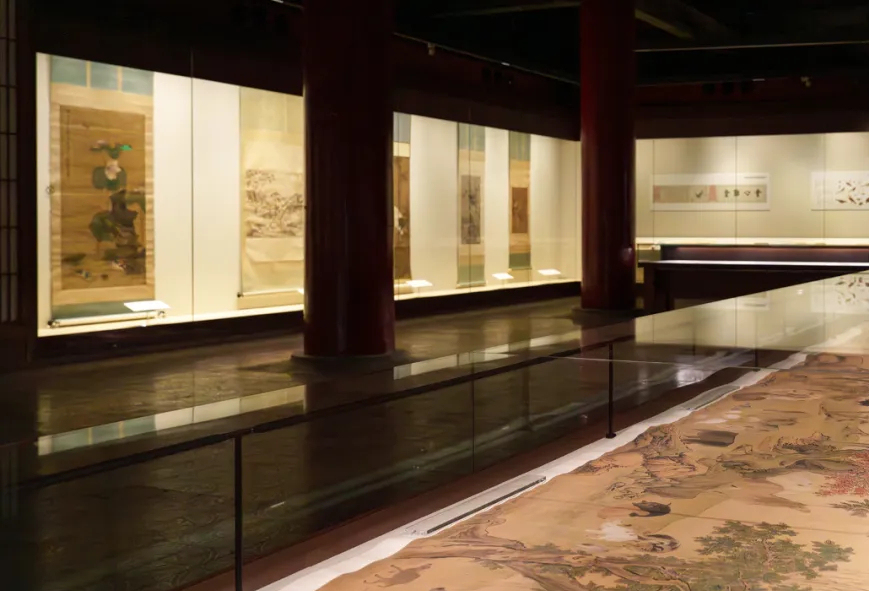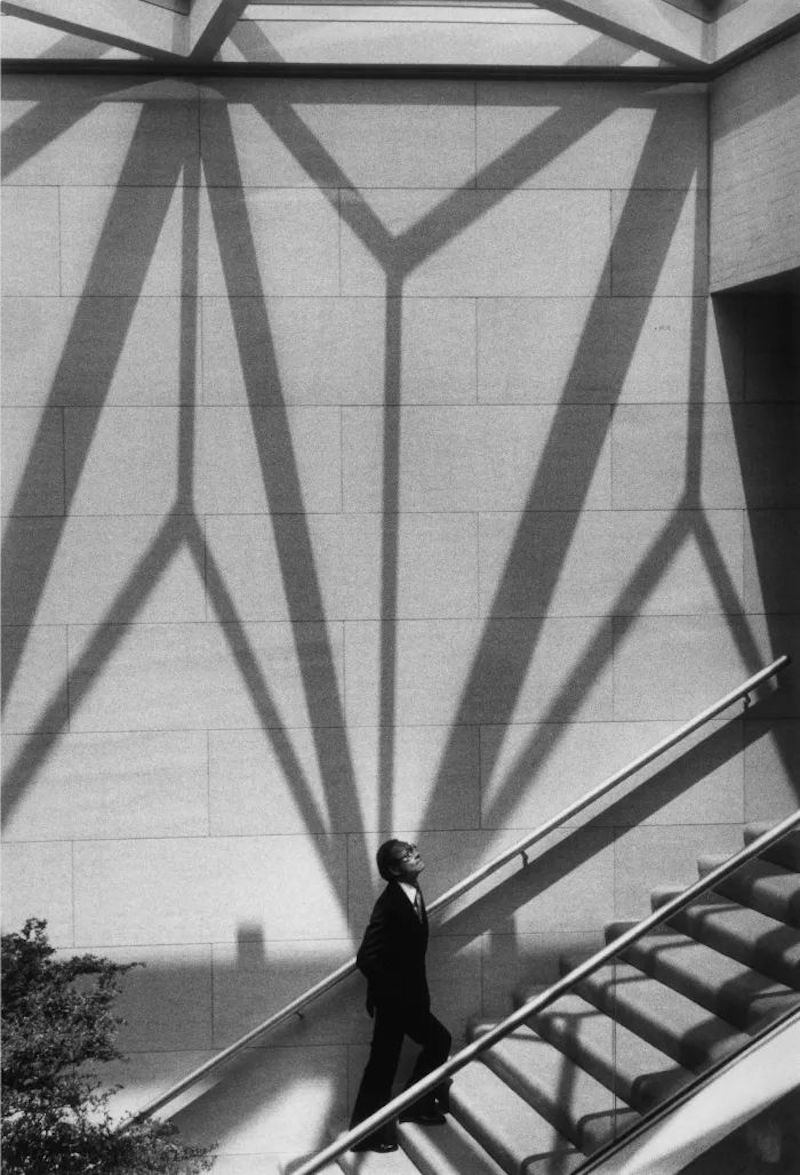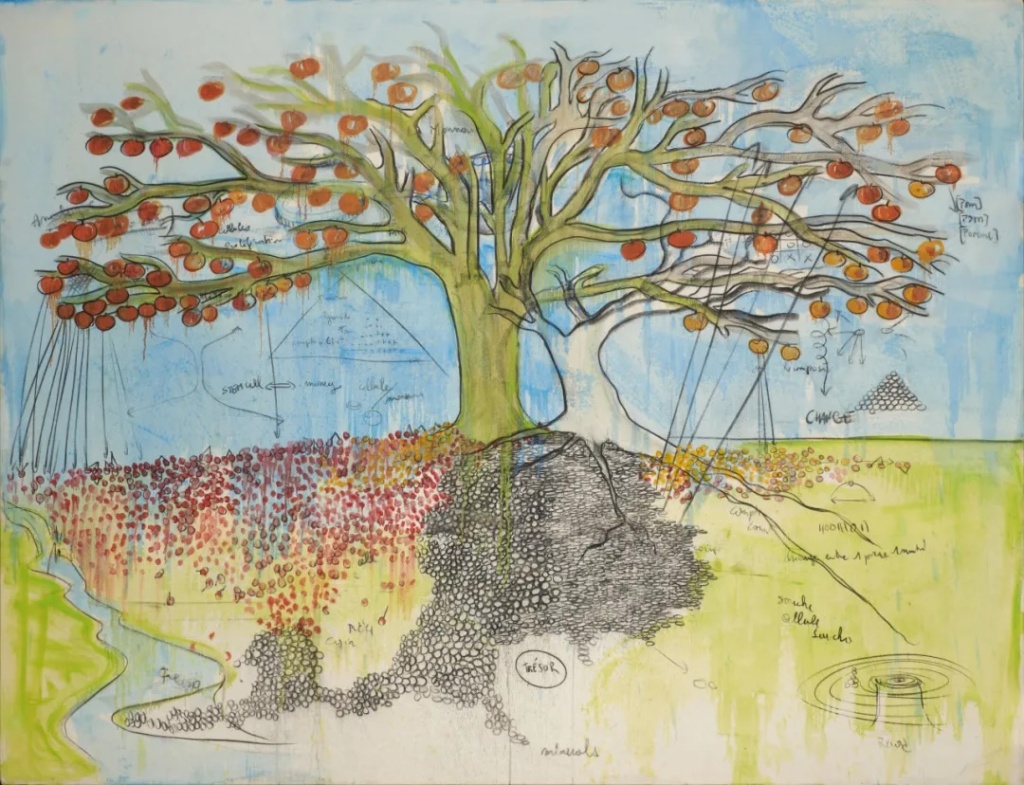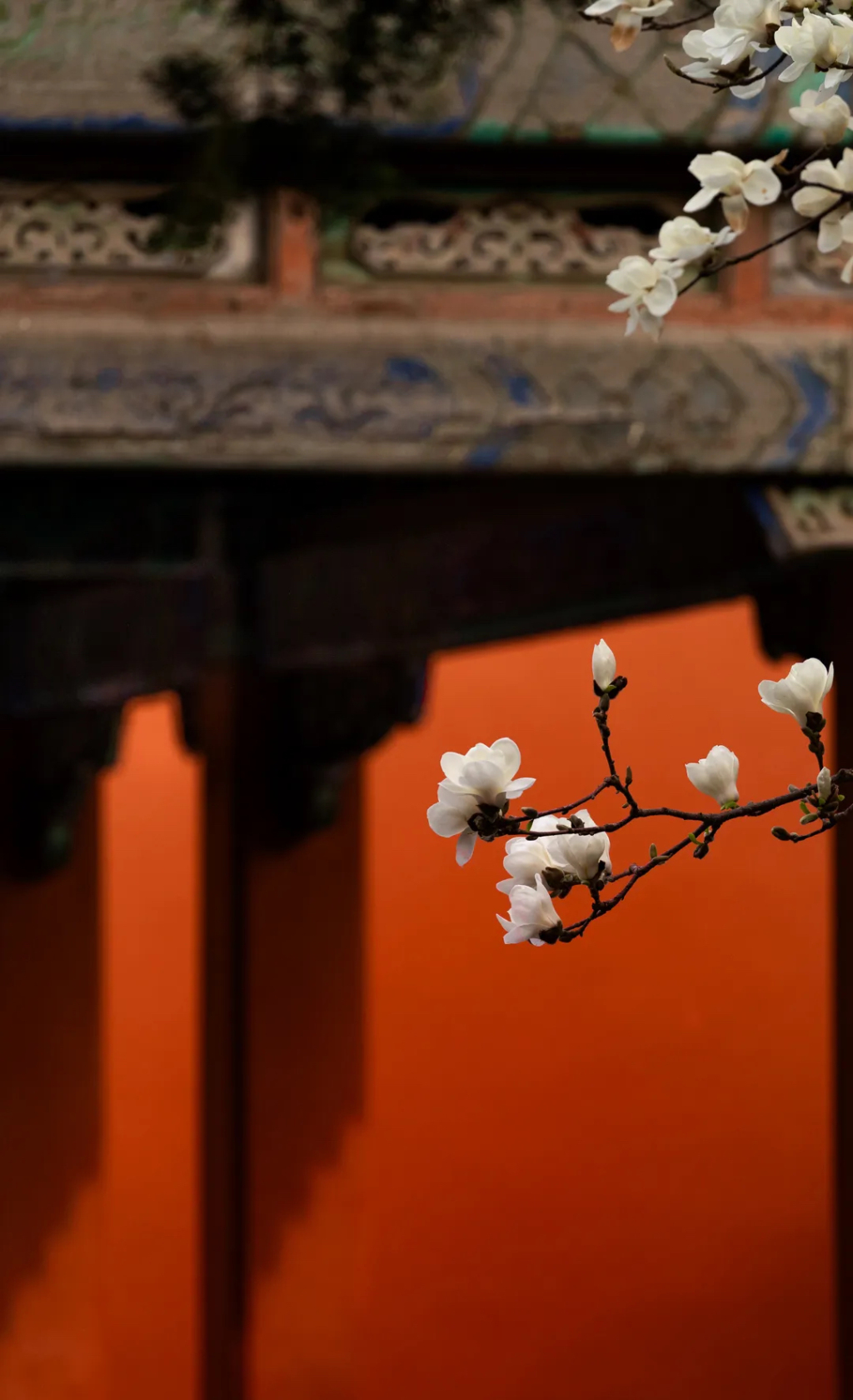
The Paper has learned that the "Harmony of All Things - Special Exhibition of Animal-themed Paintings from the Palace Museum" will be on display at the Wenhua Hall of the Palace Museum from April 30, 2025. This is the first time that the Palace Museum has concentrated on displaying its rich collection of animal-themed paintings. The exhibition carefully selected 63 sets of 117 precious works from the Five Dynasties to the Qing Dynasty, covering birds, beasts, grass insects, scales and shells, etc., with a gathering of famous artists, many schools and diverse techniques, including Huang Quan's "Sketch of Rare Birds" in the Five Dynasties and Zhao Ji's "Hibiscus and Peacock" in the Song Dynasty.

Exhibition site at the Wenhua Hall Calligraphy and Painting Gallery of the Palace Museum

Exhibition site
According to the information released by the Palace Museum, the first unit of the exhibition is "Birds Singing in Spring". Birds are important subjects of expression in traditional Chinese paintings, and are often combined with flowers and trees, thus forming the flower-and-bird painting genre, also known as "feathered birds" or "feathers". Based on the two major styles of "Huang Jia Fugui" and "Xu Xi Ye Yi" during the Five Dynasties period, it has been continuously interpreted and developed, presenting a diverse range of painting styles.

Huang Quan's Scroll of Rare Birds from the Five Dynasties (Partial)
Huang Quan's works mostly depict rare flowers and birds in the palace gardens. His painting style is neat and exquisite, and he is known as "Huang's wealth". In his "Sketch of Rare Birds", 24 birds, insects and turtles are evenly distributed on the picture with accurate proportions. The birds are rigorously shaped and have distinct features. They are either still, flying or singing, with rich forms and full of vitality; the insects and turtles are depicted in detail.
The painting features a blend of light and thick ink, with elegant and rich colors. It is a classic work of ancient meticulous flower and bird painting and has had a profound influence on later generations.

Song Dynasty, Cui Bai, Winter Sparrow Scroll (Partial)
The Song Dynasty's "Cold Sparrow Scroll" by Cui Bai is vivid in artistic conception and exquisite in brushwork. The sparrows in the painting are in different shapes, some perched and some flying, looking back and forth in harmony, showing rich changes and natural lifelikeness. The author uses both dry and wet ink and color, combines fine and freehand, and uses light and elegant colors, creating a new style of Song Dynasty flower and bird painting.

Part of the painting "Hibiscus and Peacock" by Zhao Ji of the Song Dynasty
In the "Hibiscus and Peacock" scroll by Zhao Ji of the Song Dynasty, a peacock is perched on a hibiscus branch, looking back and gazing at two dancing butterflies. A few chrysanthemums are slanting out, forming a lively autumn scene.
The ancients called the chicken a "bird of virtue", which possesses the five virtues of civility, martial arts, courage, benevolence and trustworthiness. This painting carries the political ideals and aesthetic pursuits of Emperor Huizong of Song Dynasty. It is a perfect combination of exquisite realistic techniques, profound Confucian implications and poetry, calligraphy and painting. It is a representative work of Song Dynasty court flower and bird painting.
The Bird Album, co-painted by Yu Sheng and Zhang Weibang in the Qing Dynasty, records six ecological systems and dozens of species, including songbirds, climbing birds, land birds, raptors, wading birds, and swimming birds. The right page of the album contains pictures, and the left page contains the species names, origins, ecological characteristics, habits, etc. in both Manchu and Chinese. The main body of the bird combines meticulous brushwork and heavy colors with Western painting techniques, with a strong sense of three-dimensionality, and the background adopts the style of the Qing Dynasty court painting, making the Bird Album both authentic in Western natural history paintings and aesthetic in traditional Chinese flower and bird paintings.
The second unit is "A hundred beasts dancing". The Book of History states: "When the stones are struck and the stones are slapped, the beasts dance together", which is a sign of peace and prosperity in the country. Beasts are closely related to human life, from wild beasts to farming and hunting partners, from rare species in foreign lands to symbols of auspiciousness in myths and legends. The ancients expressed their awe, love, curiosity and sustenance for animals in their writing, which became a unique category of "beasts" in traditional Chinese painting.

Yuan Renrenfa's Scroll of Two Horses (Partial)
Ren Renfa's "Two Horses Scroll" from the Yuan Dynasty depicts two horses. The first horse has brown and white fur and a strong body. Although it wears a rein, it holds its head high and chest out, and walks briskly, as if it is about to start galloping; the second horse has its head down and shoulders hunched, and it is skinny, with its ribs clearly visible, giving a sense of being quite old.
Ren Renfa's own postscript points out the theme of this painting. The painter uses fat horses to represent corrupt officials who plunder the people and are unrestrained, and skinny horses to represent scholars who are diligent and honest but not valued. He criticizes the corruption of officials in the Yuan Dynasty. It is a work with great ideological depth in the history of ancient art.

Huayan Scroll of Beasts from the Qing Dynasty (partial)
The third unit is "All Kinds of Creatures". "Insects", "Dragon Fish" and "Scaly Shells" are branches of flower and bird painting, which are similar to but not identical to insects, fish, reptiles and other classifications in biology. They are in various shapes and different habits, and they are active in every corner of nature, becoming interesting and subtle magical animals in the painter's pen.

Exhibition site

Zhao Chang of the Song Dynasty (attributed) Sketches of Butterflies (partial)
The scroll "Sketch of Butterflies" by Zhao Chang (attributed) of the Song Dynasty depicts a group of rural scenes in autumn. The painter used a combination of fine and freehand brushwork, with light and delicate ink lines, fine and smooth strokes, and agile brushstrokes at the end, followed by "light colors" to smudge, adding a natural and wild charm to the exquisite and elegant painting, which makes people forget the mundane world.

Jian Baizi, Yuan Dynasty, "Insects and Grass Scroll" (partial)
The "Insects Scroll" by Jian Baizi of the Yuan Dynasty is based on Su Shi's poem "Inscription on Yong Xiucai's Painting of Eight Insects", which depicts seven kinds of insects, including longhorn beetles, cicadas, dung beetles, scorpions, crickets, toads, and snails, and Su Shi's poem is recorded in regular script before each insect. The author pursues the high and ancient charm of Song Dynasty realistic paintings. Each animal is lifelike, vivid and lifelike, and the brushwork is light and elegant, showing the meaning of natural interest. This painting is the only one of Jian Baizi's works in the world, and it is also a representative work of the Yuan Dynasty on insects.
Birds flying, beasts running, fish swimming, insects chirping, the traditional Chinese classic aesthetics presented in these paintings demonstrate the way of nature.
At the opening of the exhibition, the Palace Museum also launched the exhibition catalogue "Harmony of All Things: Special Exhibition of Animal-Themed Paintings from the Palace Museum". The exhibition will be held from April 30 to June 29, 2025.
(The text and pictures in this article are compiled based on the information and official website of the Palace Museum)


